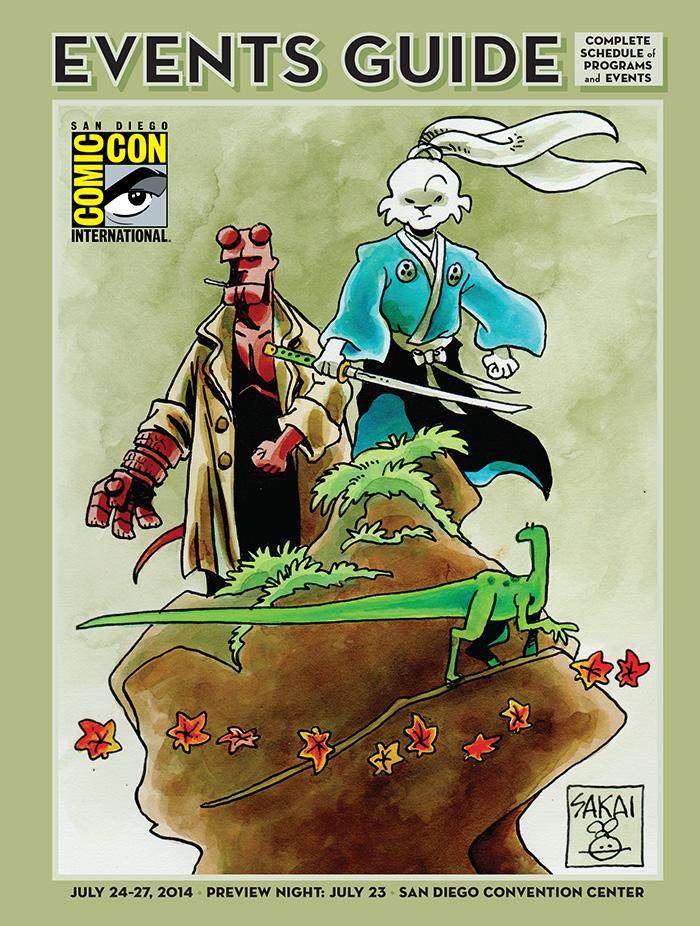THE TOUCAN INTERVIEW
Comic-Con Special Guest Stan Sakai: 30 Years with Usagi Yojimbo
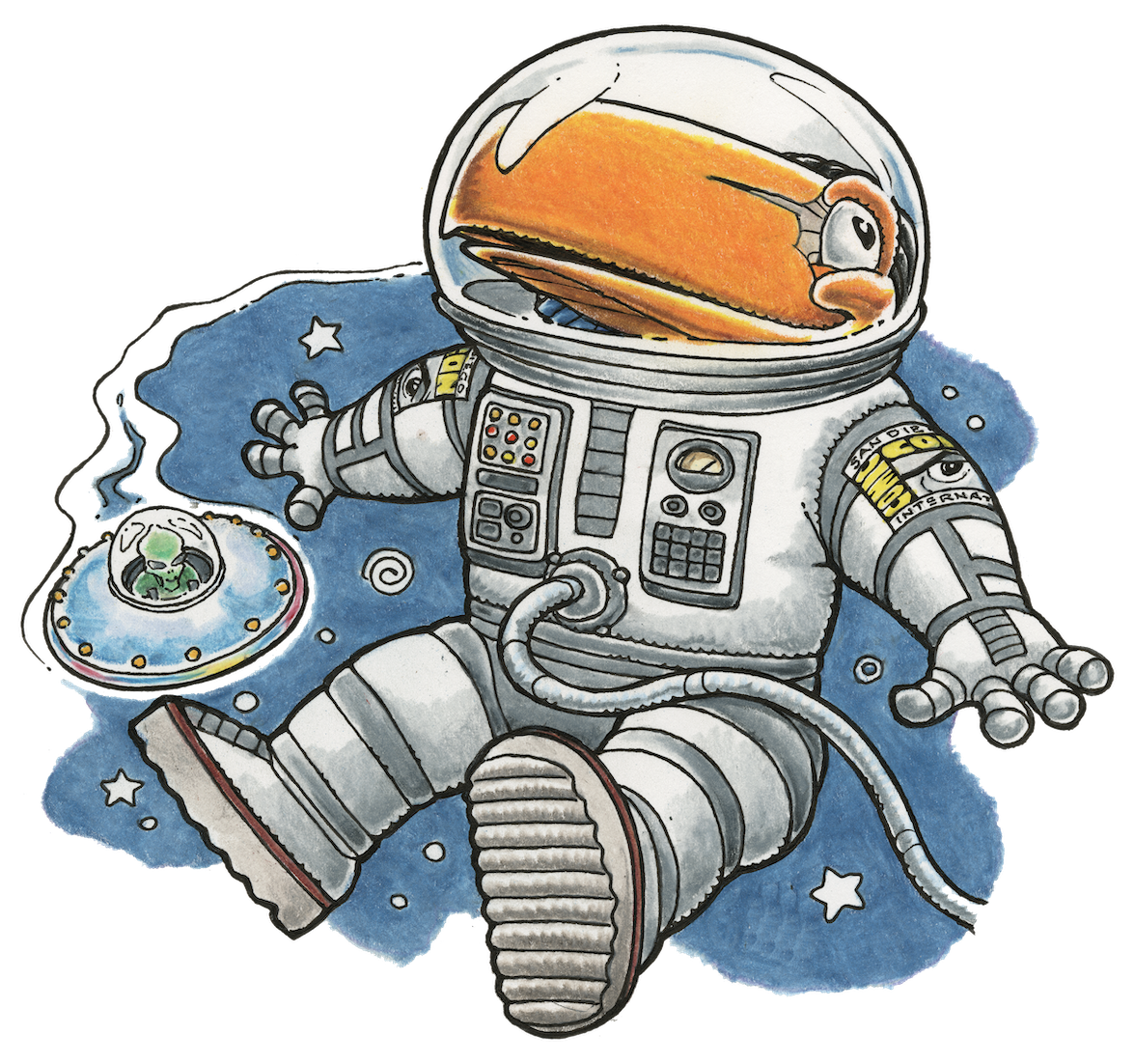
Stan Sakai’s Usagi Yojimbo (“rabbit bodyguard”) is 30 years old. First published in 1984 in the anthology Albedo Anthropormorphics #2, the samurai bunny then moved to Fantagraphics and their own anthropormorphic anthology, Critters. Usagi finally got his own book in 1986 and the rest, as they say, is history . . . and that’s something that plays an integral part in Sakai’s epic story of his ronin rabbit. Meticulously researched, Usagi Yojimbo has surpassed 200 issues, with 27 collections and an original graphic novel. Stan himself is a multiple award winner for the series, including four Eisner Awards (twice for Best Letterer [1996 and 2012], Talent Deserving of Wider Recognition [1996], and Best Serialized Story [1999, for Usagi Yojimbo: Grasscutter]). The 28th collected edition of Usagi Yojimbo (Red Scorpion) comes out in July from Dark Horse, Stan’s publisher since 1996. A special hardcover benefit book to help Stan and his wife Sharon with her ongoing health problems, The Sakai Project: Artists Celebrate Thirty Years of Usagi Yojimbo, also debuts from Dark Horse in July, just in time for Comic-Con. Stan Sakai is a special guest at Comic-Con this year. Shane Snoke conducted this interview with the writer/artist in April, which will appear in this year’s Comic-Con International Souvenir Book. Stay tuned at the end of the interview for an exclusive piece of art that Stan created for Comic-Con’s Events Guide cover this year, featuring Usagi and a surprise guest, who’s also celebrating an anniversary this year!
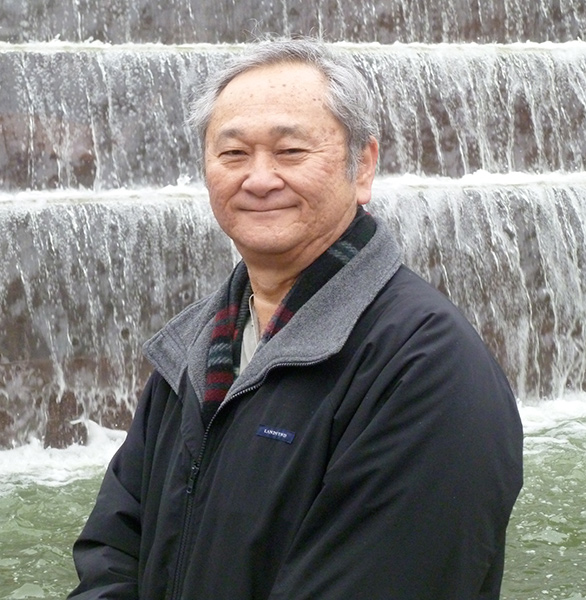
CCI: Wow, 30 years! Can you believe it?
Stan: It’s really hard to believe. When I first started with Usagi, I was more concerned about what am I doing the next month and now it’s 30 years later and it’s just incredible.
CCI: A singular creato- character relationship of this longevity is a rare club in comics, outside of daily newspaper strips. I can think of you, Dave Sim (Cerebus), and your friend Sergio Aragonés (Groo the Wanderer).
Stan: Erik Larsen (Savage Dragon) is part of the club as well.
CCI: Yes. How have you made it work this long?
Stan: I don’t know. When people ask who am I writing for, what’s my readership, I just tell them it’s a readership of one. These are the stories that I would like to read and I’m just fortunate that other people like to read them as well.
CCI: And how important do you think it is that you and those other creators all own your characters?
Stan: It’s very important. I have control over the storylines, what I want, merchandising, reprints, foreign editions, everything. You know I get approval, I don’t physically go out and solicit for licenses but I do have approval over everything.
CCI: What’s been the hardest thing about producing this book for so long? What’s your biggest challenge?
Stan: It’s probably storytelling for me. I have ideas of long storylines that I want to do like five years from now. Thinking of what to do next month, that’s the challenge. Writing those stories, the smaller stories that’ll lead up to those epic stories, that’s a challenge to me.
CCI: What’s been the best part about it?
Stan: I get to work at home, I watch television, it’s a great life. I mean there’s no commute to go to work. The kitchen is right through the door. It’s wonderful. No one breathes down my neck because I make a schedule with my [Dark Horse] editor Diana Schutz, and so it’s a comfortable schedule for both of us.
CCI: You’ve spent so much time with this character . . . when you look back on it now who is Usagi to you?
Stan: Usagi was inspired by a real life Samurai named Miyamoto Musashi who lived at the turn of the 17th century, and for me he’s always been like the epitome of what a samurai warrior should be: honorable, loyal and a master swordsman. I know you’re thinking “Oh, Stan was thinking of himself,” but no, Usagi is not really a person like myself. I think he reflects the ideals of the samurai culture.
CCI: If Usagi weren’t a Ronin, what other professions do you think it would be fun to write him in?
Stan: If he were not a samurai? I think some kind of artist, like an artisan, a pottery maker or something. Or maybe a delivery man. A sushi delivery man, that’s pretty good. He gets to roam around and have adventures . . . yeah, good story . . . okay, that’s mine.
CCI: Are there any other figures that that are also sources of inspiration for Usagi, or he is primarily Musashi?
Stan: He is primarily Musashi. I built on it using other characters, other historical figures and my own imagination, but Musashi was the foundation of Usagi. There are other characters inspired by popular culture. Lone Wolf and Cub became Lone Goat and Kid. Zato Ichi the blind swordsman became Zato Ino the blind swordspig.

© 2014 Stan Sakai
CCI: What is it about a character that inspires you to keep going and to generate so much material?
Stan: As soon as I started the first Usagi story I just fell in love with the character and saw all the potential he had within him, and my big decision was to make it either a historical series or a pure fantasy series. I pretty much walked the line between the two. So I get out a lot of history in my stories, but I also am able to do pure fantasies, ghosts, monsters, goblins, that type of thing. Japan has one of the richest histories of folklore in the world and I’m able to gather from that as well as make up my own stuff. It’s fun. I own my own character. I can do whatever I want with him and I do stories about adventure, about romance and mysteries, I can do whatever I want with him and it’s fun.
CCI: Funny animals have been a significant trope in sequential art from its very earliest forms. Why is anthropomorphism such an effective story telling tool?
Stan: Because it’s universal. For Usagi it’s Japanese characters, but people could relate to them because they are animals. It’s not traditional Japanese people and they don’t have the Japanese type of stereotypes because they are animals. I honestly don’t know why it’s so popular. I mean it’s hard to give the reason for the popularity of Mickey Mouse. People can relate to animals because they’re universal.
CCI: How do you think this all would have turned out if you had decided to go forward with the book with human characters?
Stan: I don’t know. Usagi is definitely a fantasy series because, first of all, it is about a samurai rabbit and there have been other samurai books that have used people that have not lasted very long. So it’s hard to say what might have happened. Perhaps the series would be even more successful with people or we could have just lasted a couple of issues, I don’t know, but I do know that it does work with Usagi as a rabbit.
CCI: Could you retell the story of developing the initial artwork for Usagi? The way I’ve heard it before was that you were initially drawing him as a human character.
Stan: I wanted to do a series inspired by the real life samurai Miyamoto Musashi but just one day sketching in my sketch book I drew a rabbit with his ears tied up into a chonmage, a samurai top knot, and I loved the design. It was simple, but it was unique. It was visually striking. So I left my character as a rabbit. Instead of Miyamoto Musashi, I named my character Miyamoto Usagi, Usagi means rabbit of course in Japanese and that’s the character I’ve been working on for the past 30 years.
CCI: Do you think Nilson Groundthumper is jealous of Usagi?
Stan: The Nilson Groundthumper collection just came out. It’s all the stories that I had done about Nilson and looking back on it, they’re fun stories, they’re like fluff pieces and they’re fun to do.
CCI: Does he ever show up in your dreams and accuse you of cutting him out?
Stan: No, but it’s like once I sided with Usagi then Nilson pretty much fell to the wayside.
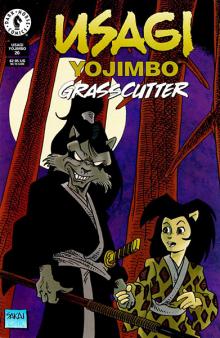
© 2014 Stan Sakai
CCI: Do you have a favorite Usagi story? Is there one that really feels special to you?
Stan: For me that would be the kite story [Usagi Yojimbo vol. 1, #20]. This is way back in the early days, and it was significant for me because that was the first time I actually did a lot of research for a story. It followed a kite maker and it went through the entire process of making one of those giant 40-foot fighting kites. From the gathering of the wood, using the bamboo frame, making the paper and everything. For me that was a turning point. I loved doing the research and I’ve been trying to do as much research for my stories as I could, you know within reason.
CCI: I enjoy reading through your notes at the end of every collection.
Stan: “Grasscutter” was the most intensive story for me so far [Usagi Yojimbo vol. 3, collecting issues 13 through 22]. It took about five years to research and to write and it starts off with the creation of the Japanese Islands, so you know it did take a long time. That one won the Eisner Award and a number of different awards as well.
CCI: Besides the meticulous historical research you also draw a lot of inspiration from movies and other great literature. What are some of those great movies that have really meant a lot to you?
Stan: Oh, my favorite director is Akira Kurosawa and his work is just phenomenal. He’s one of the best. I love the way that Hitchcock does suspense. There’s other directors that I just look for certain things. I think as far as storytelling I’m influenced more by cinema than I am by comic books, just the way the visual aspect of storytelling goes.
CCI: I recall reading one storyline that I think had been inspired by Roman Holiday.
Stan: Audrey Hepburn is my favorite actress and there was one that was inspired by that, “Runaways” [Usagi Yojimbo vol. 2, #3], in which Usagi ran off with a princess.
CCI: I think what makes your work so vibrant is the imaginative way that you draw upon all these different sources.
Stan: Right, and those are used just as springboards. It’s not an actual retelling of the story, but it’s like the foundation where I use that as a springboard and go off on different tangents.
CCI: Is there a Usagi story that you’d like to take another crack at, one that maybe didn’t come out exactly the way you’d hoped or you just feel like it would be great to give it another take?
Stan: Sometimes I have multiple endings to a story, such as there was one story where it was a multiple issue storyline, dealing with a duel between a master swordsman and Usagi’s teacher Katsuichi. For that one I did about three different endings and I was undecided until the very last. When I sent it into Diana, my editor, I said as soon as you get this read it, tell me what you think. Other times I would do two different endings and send it to Diana and say pick which one you want. When the first Usagi Yojimbo Color Special was reprinted in black and white, I could not find the original artwork and back then we didn’t have digital copies or anything, so all we had were the printed color pieces, color work and it had to be reprinted in black and white, so I redrew that 20 page story. Most of the panels were as is, but then there are some pages that I thought what was I thinking? So I changed those completely. It was interesting to go back and redo a story that I did 20 years ago, very eye- opening.
CCI: What was that like, revisiting a younger Usagi and even your own earlier writing?
Stan: Well, not so much about Usagi as a character, but more myself as a storyteller. That’s what I found interesting, the decisions I made back then as opposed to decisions of storytelling and composition that I make now. I did change a lot of the artwork, different compositions, different point of views, it was very eye-opening for me. I did not think I had changed that much over the years, but apparently I did. Just like Usagi has changed over the years physically, he’s gotten taller, he developed a little bump for the nose, this is all unconscious on my part, it’s just he evolved over the last 30 years and he keeps evolving. It’s like Groo the Wanderer. If you look at the first issues of Groo versus what Sergio is doing now, you can see Groo’s changed so much and it’s the same with Usagi.
CCI: Let’s go back before the creation of Usagi. How did you get into comics?
Stan: I fell through the back door. I was doing freelance artwork in Los Angeles and I just happened to hook up with Sergio Aragonés. I found his name in the phone book actually, and we’ve been friends ever since. Through him I joined an organization called CAPS, the Comics Arts Professional Society. Through the grapevine I heard of a guy in Seattle [who] wanted to do a comic book but didn’t have enough material, so I submitted a story and I appeared [in] Albedo #1. Then he asked, “What do you have for the second issue?” and I submitted Usagi. After that, publishers had started coming to me and asking if I’d like to do some work for them. Kim Thompson at Fantagraphics said he was doing a funny animal anthology [Critters] and he invited me to be a big part of it. From there Usagi received his own series and 30 years later I’m still doing Usagi. I have to say I did take a break from Usagi last year in 2013 to work on the 47 Ronin story [published by Dark Horse and written by Mike Richardson]. It was a five-issue miniseries and I had to think about whether I really wanted to take a hiatus from Usagi or not. I figured this was a good opportunity, so I did accept the 47 Ronin gig. However after the first issue I was just itching to get back to Usagi.
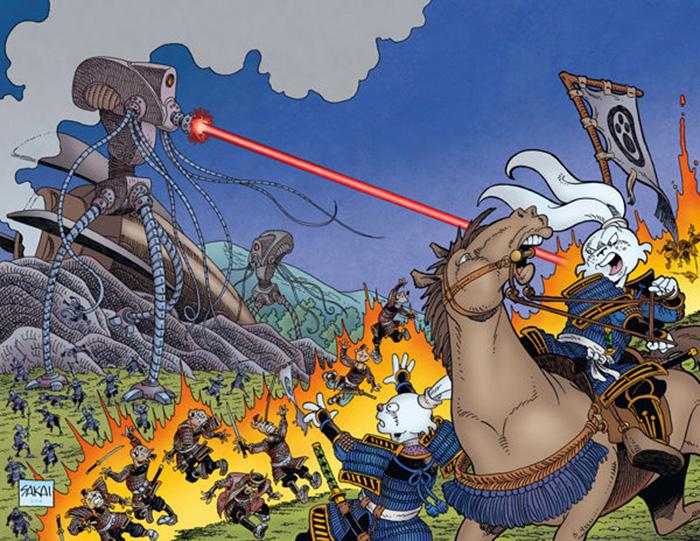
©2014 Stan Sakai
CCI: How did it feel to be away from him?
Stan: It was good for me in that I kind of stretched myself, because with 47 Ronin, it was all with humans, but I just wanted to get back to Usagi after the first issue was completed. You know it’s funny, when I did start getting back to Usagi I realized that I was drawing five fingers on my characters on the first few pages, so I had to go back and correct them.
CCI: That’s very funny.
Stan: When I was drawing humans I had to consciously say “five fingers, five fingers,” but when I got back to Usagi I just naturally started drawing five.
CCI: Getting back to how you broke into comics, what made you want to reach out to Sergio Aragonés?
Stan: I admired him. I loved his work. I was a big fan and I always heard what a nice guy he is, so I just out of the blue sent him a letter. I never called him. I thought that would be a bit too forward, but I did send him a letter and he was nice enough to call me.
CCI: Are there other creators over the years that you admire or are inspired by?
Stan: Oh, there’s just so many. Moebius. There’s Osamu Tezuka (Astro Boy) and I was fortunate to be at Comic-Con when he was there and I got to meet him a couple of times. That was really neat because I grew up with his work. I grew up in Hawaii and so was exposed to both the Western comics as well as the Japanese comics. There’s a Belgian artist called Michetz (Kogaratsu) and he does wonderful Samurai comics, but like myself he has a Western style of storytelling. I really admired his work as well. There’s so many others. Hermann did a lot of European work. American artists, there’s so many like Jeff Smith (Bone). He has taken the idea of self-publishing and creator-owned work to the limit. David Petersen (Mouse Guard) is a good friend and I also admire his work. Geof Darrow (Shaolin Cowboy), Frank Miller (Sin City), there’s just so many.
CCI: You handle the bulk of the creative work yourself. You’re doing the writing, the penciling and the inking and, of course, the lettering.
Stan: It’s all done the traditional way. Tom Luth does the coloring for the covers, but aside from that I do all the mechanics of putting a page together.
CCI: What would be a normal working day for you?
Stan: I just work as long as I can. Right now it’s a bit difficult just because we have some health issues in the family. So I try to get as much work done as I can at the drawing board during the day.
CCI: Do you have a process or any sort of rituals?
Stan: No rituals, but when I’m writing I need to be left alone. I need to be quiet. When I’m drawing I need noise around, that’s why I have the television on. I like to write in planes because, except for the occasional interesting seat neighbor, you pretty much are by yourself so I’m able to work at that time.
CCI: You’re quite well known as a letterer and have won several awards. Is that something you’re particularly passionate about?
Stan: Well, I enjoy lettering in that it uses a different part of the brain, it’s more mechanical, and when I letter I can have the TV on, but I can’t have conversation. That’s why I tell the kids don’t bother me while I’m lettering, otherwise I’ll start writing down what you’re saying. I enjoy lettering and like I said it’s more mechanical. I just look at the script and physically write down what the script says.
CCI: It’s kind of an unsung art form.
Stan: Especially hand lettering. Hand lettering is a dying art form and I do lettering directly on the original artwork. I do it for Sergio’s Groo the Wanderer and for my own Usagi. Aside from that I really don’t do lettering, and I do lettering for Sergio just because I enjoy working with him. I have a very distinctive style of lettering and it doesn’t go with everything, like it won’t fit in a superhero book, but it does fit nicely with both Groo and Usagi.
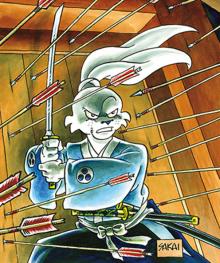
CCI: You expressed some—maybe this is my characterization—but some coolness towards computer coloring in the past. How do you feel about that these days?
Stan: Well, I don’t do computer coloring. When I color I usually paint, I do watercolors. There’s some colorists that are wonderful. Tom Luth, who is my colorist of choice, does a wonderful job with both Usagi and Groo and his other projects. So I love his work. When he does Usagi I pretty much leave him on his own. He’ll ask for direction sometimes such as what color would a tengu be, because he’s unfamiliar with that creature from folklore, and on things like that I would give him guidance, but other than that I just let him on his own.
CCI: So generally as a tool you’re okay with the computer coloring now?
Stan: Oh, yeah.
CCI: Usagi was indie before it was cool to be indie and has survived so many paradigm shifts in the business. What do you think the future is going to be for creator-owned comics? What’s your outlook?
Stan: There are so many more creator-owned comics nowadays. When I started out there were just a few black-and-white creator-owned books. I mean, there was ElfQuest certainly, Cerebus, Grendel, Mage. The Teenage Mutant Ninja Turtles and I started the same year, I think the very same month. So we’re contemporaries, but nowadays there’s so many creator-owned properties out there, like I had mentioned a few, Jeff Smith, David Petersen, and so many others, it seems to be more the norm now, more than anything.
CCI: Do you feel like the business landscape still looks good?
Stan: For me it does. I don’t know how, because comics always go in mountains and valleys the way they sell. There’s like a 20-year cycle of comics being popular and then it kind of phases out and regains its popularity again, and we seem to be on the rise or the very top of its popularity once more.
CCI: How do you feel about digital distribution platforms for comics?
Stan: Usagi, besides being physical comic books, does have a digital edition through Dark Horse and more people can get it. I do prefer the traditional physical comic books and graphic novels, but you know, if more people see it digitally more power to it, it’s just that you can’t sign a computer.
CCI: It’s hard to replicate the impact of a two-page spread on a phone or tablet. Some people are thinking about producing their art in a way that’s more compatible with digital platforms. Has that invaded your creative space at all yet?
Stan: You know, I never even considered that. For me the comic books are the physical comic books and that’s the format I like to work with. I’m comfortable with that and I don’t think I’ll change.

I would also like to talk about The Sakai Project. Do you know about that?
CCI: I’m very excited about that.
Stan: It’s a coffeetable book published by Dark Horse and I think it’s at about 160 pages of artwork done by various artists, and the amount of talent in there is just incredible. Jeff Smith did one, Art Adams, Adam Hughes, Geoff Darrow, so many people in there and even J. Scott Campbell is in there, people that you would not associate with ever drawing Usagi, but it’s neat. It will come out at Comic-Con and I’m really looking forward to it. The artwork is phenomenal and we’re getting art donations from all over the world, a lot from France, one even from Macedonia, it’s really mind-boggling.
CCI: And other than The Sakai Project what are some other things happening in the world of Usagi Yojimbo that we can look forward to?
Stan: Well, I’m currently working on a six-issue miniseries called Usagi Yojimbo: Senso, and it takes place about 15 years in Usagi’s future and there’s a great final battle between the Geishu Clan, which Usagi is now part of, and Lord Hikiji, which is the great political evil in Usagi’s time and it’s a final battle. We’ve got samurai armor, horses, everything and in the middle of this the Martians attack and basically the premise is what if the Martians had attacked 200 years before H. G. Wells had recorded it in his War of the Worlds, where the Martians attacked Victorian England. It’s just fun for me. It’s a neat way to get back into Usagi. I’ve got samurai armies fighting tripod robots. I’ve got ninjas versus those octopus Martians and it’s a lot of fun. It’s not historically correct, but it is a lot of fun.
CCI: Are there going to be any other Usagi events or announcements at Comic-Con?
Stan: Well, besides The Sakai Project the next Usagi collection will be out, that will be Usagi book 28, which has an introduction by George Takei. I thought that was pretty good, “Mr. Sulu.” Dark Horse is planning—it won’t be out in time for Comic-Con—but they’re planning a series of omnibus editions where they would collect about three of the trade paperbacks into one book. That should be coming out later on this year. It’s great. 47 Ronin is out, the Nilson Groundthumper book [The Adventures of Nilson Groundthumper and Hermy] is out and it’s a big year for me.
CCI: You also have one of the oldest fan websites, which has been running almost for 20 years.
Stan: And that’s because I have nothing to do with it. I am on the Usagi Yojimbo website really regularly on the forums. I answer questions. I interact with the fans. It was started by fans and it’s maintained by fans because I really don’t have the knowledge to do all this and it’s incredible the amount of work that they’ve done and it’s really neat. They even have contests on there, give away T-shirts, books and it’s great.
CCI: Generally what’s your relationship like with Usagi fans?
Stan: Oh, they’re wonderful, they are great. When I was in France once, one of the French fans took a full week off of work to show me around. We went around the Emerald Coast of France to places I’ve been wanting to go to. Fans are great. We’ve had Usagi fan dinners at different conventions, they’ve organized some outings and they’re great people. They’re very supportive.
CCI: The story about the lost artwork [from the Color Special] makes me think that after 30 years you’ve probably generated a ton of pages of art. How are you keeping all that? Are you storing it?
Stan: It’s all in my closet. I have these large FedEx boxes, each box can hold about one trade paperback full of artwork and that’s how I store the artwork. It’s packed in my closet.
CCI: Very scientific.
Stan: Yeah, I don’t sell my published pages. I do sell things like covers and things, but not the pages.
CCI: Do you have a plan for it someday? Is there something you’d like to do with it all?
Stan: Yes I do. They’ll be donated.
CCI: How do you see Usagi’s future?
Stan: Well, I hope to continue doing it because I have to face facts that I have no other job skills. I just hope to continue doing Usagi as long as I can.
CCI: He’s still inspiring your imagination.
Stan: Exactly, yes he is. There’s so many more stories I’d love to tell and it’s like each story that I do write and draw, when there’s another one now that I think of, it acts as a springboard to another story.
CCI: I read an interview with you that was about 15 years ago where they’d asked if you had ever planned on an ending for Usagi and you said that at one time you did. Is that something that you think about at all now?
Stan: At one time there was a definite ending, but the entire storyline is pretty much obsolete now just because it’s so involved, and has involved other characters that I had created. Usagi is pretty much an ongoing series now.
CCI: Is there anything you would like to say to the fans of the books over the years?
Stan: Just thank you for your support. We need the fans to keep working. So I’m really thankful for all the readers and also the professional community that has come together to help me celebrate Usagi’s 30th and The Sakai Project.
Shane Snoke is an independent producer, digital product strategist, and consultant working in the sports and entertainment industries. (Apologies to Mr. Snoke: we spelled his name wrong in the Souvenir Book, in conjunction with this article.)
Introducing Stan’s amazing Comic-Con International Events Guide cover, celebrating not only the 30th anniversary of Usagi Yojimbo, but also the 20th anniversary of Mike Mignola’s Hellboy. Thanks to Stan for creating this exclusive piece of art just for Comic-Con 2014!
